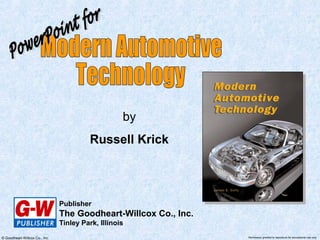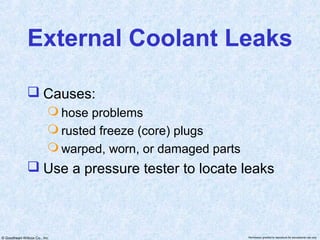The document discusses techniques for diagnosing engine mechanical problems. It explains that a technician must understand symptoms, perform inspections like oil analysis, and use tools like a compression gauge. The technician evaluates results to determine the problem, such as worn rings, valves, bearings or other internal engine issues. Once diagnosed, the technician can decide if a minor repair or full engine rebuild is needed.





























































